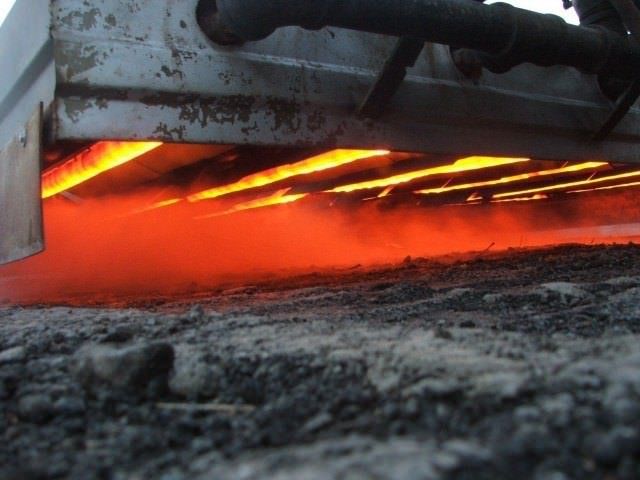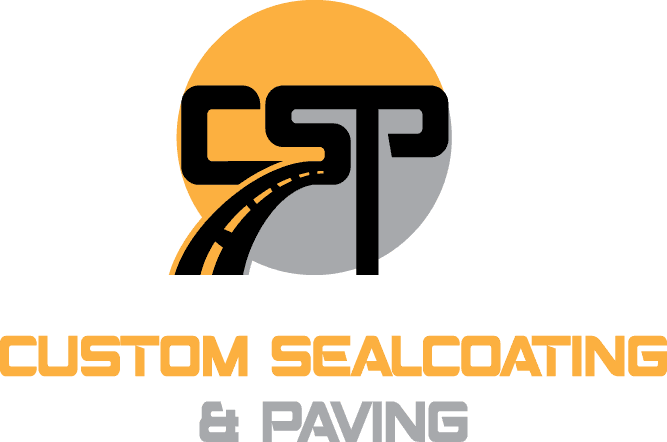Call Us Today (888) 295-1075
Infrared
Infrared Asphalt Repair
Custom Sealcoating Infrared
As a team of asphalt professionals that specialize in proper asphalt procedures, we believe we provide appropriate information to our clients. We utilize the infrared heating repair method for a variety of reasons. We begin the infrared process with our infrared heating unit that begins to soften the asphalt below it first. This essentially softens the asphalt in order for our team to start working and reshaping the asphalt appropriately.
Over the years, we have been able to progress in the technology that we use for this process. It is common that we use the current infrared technology for pothole repairs. Before infrared technology was utilized, it was common to see professional asphalt professionals create a square cutout of the section being repaired called the old saw method."
Thanks to the current method that we are able to utilize now, uneven seams and patches are no longer common. It is also noticeable that with infrared heating it reduces water infiltration (which can cause problems during the repair process).
With the old method, asphalt patches that were repaired typically had to be redone ever year. Once water (typically from rainfall) enters the seams/patches, when it becomes frozen due to cold weather and thaws out, it will begin to create cracks. Cracks that go unmaintained can become bigger, which results in either wider cracks or potholes.
Our team of asphalt professionals is trained to consistently maintain high standards when repairing potholes. It is of the utmost importance that we operate our equipment to the best of their abilities. Many clients like to inquire about how we conduct pothole repairs.
1. Clean the area appropriately from any and all debris (including drying any excess water/moisture).
2. Station the infrared heating equipment over the pothole needing repair. Typically it takes between 7 –10 minutes to soften the area.
3. Remove the heater and carefully rake excess softened asphalt. (Caution is taken as the temperature could be 350 degrees or hotter Fahrenheit).
4. Utilize the rejuvenator mix in order to replenish the light oils that have become affected due to oxidization.
5. Add just enough fresh asphalt in order to level out the damaged pothole area to the surrounding path.
6. Roll over the pothole with a vibratory roller. This fuses the patch together to the surrounding pavement.
7. Allow for the patch to dry appropriately before allowing any traffic to resume as normal.
We live in a society that is rapidly changing when it comes to technology. In our specific industry, new technology/methods allow for us to complete tasks in quicker and efficient manners. It does not make any sense for us to use old methods just because they are cheaper now.
We believe in making sure that we provide affordable services and high quality services at the same time. If we continued to utilize old methods, they would only contribute to a variety of scenarios that we want to improve. Factors such as sustainability, carbon emissions, noise pollution, asset management, employee and highway safety, are just a few things we do not want to ignore.
One of the most common questions that we encounter is why don’t authorities specify infrared projects? While it is okay for individuals outside of contractors to mention what is being used, they are not obligated to specify the projects by any means. Some contractors are completely okay with sharing the projects and others will simply complete projects as they see fit.
The asphalt industry is generally known as being conservative for the most part. It is important to note that a vast majority of the bridges, parking lots, driveways (for residential homes), and highways use asphalt pavement. Because of how frequent and the amount of traffic these areas experience. This is why the long-term demand for asphalt roads in general are so important. When it comes to utilizing the infrared process, great caution has to be taken with every repair. The attention to detail has to be even greater when new technology including infrared is being tested out for the first few times.
There are a variety of rules and recommendations that the industry (including contractors). The Federal Highway Administration, which spans over all 50 states provides important information to industry professionals and the general public. Another recommended industry website (AASHTO) has noted that zero searches for infrared has shown up on their website. At the end of the day, when it comes to utilizing infrared technology for asphalt repairs, we have made significant process. Whether it is for general purposes or customized projects, it has generally been received well for infrared technology to be used for asphalt pavement necessities. There are a variety of demonstrations and examples that you can view by searching infrared asphalt on
(http://www.youtube.com)

Send Us A Message
Contact Us
Thank you for contacting us.
We will get back to you as soon as possible
We will get back to you as soon as possible
Oops, there was an error sending your message.
Please try again later
Please try again later
Copyright © 2019 | Custom Sealcoating & Paving
| All Rights Reserved
Paving Madison |
Driveway Paving Madison
|
Driveway Sealcoating Madison |
Asphalt Paving Madison |
Sealcoating Madison |
Paving La Crosse | Driveway Paving La Crosse | Driveway Sealcoating La Crosse | Asphalt Paving La Crosse | Sealcoating La Crosse | Paving Sun Prairie | Driveway Paving Sun Prairie | Driveway Sealcoating Sun Prairie | Asphalt Paving Sun Prairie | Sealcoating Sun Prairie | Paving Fitchburg | Driveway Paving Fitchburg | Driveway Sealcoating Fitchburg | Asphalt Paving Fitchburg | Sealcoating Fitchburg | Paving Onalaska | Driveway Paving Onalaska | Driveway Sealcoating Onalaska | Asphalt Paving Onalaska | Sealcoating Onalaska | Paving Middleton | Driveway Paving Middleton | Driveway Sealcoating Middleton | Asphalt Paving Middleton | Sealcoating Middleton | Paving Waunakee | Driveway Paving Waunakee | Driveway Sealcoating Waunakee | Asphalt Paving Waunakee | Sealcoating Waunakee | Paving Baraboo | Driveway Paving Baraboo | Driveway Sealcoating Baraboo | Asphalt Paving Baraboo | Sealcoating Baraboo | Paving for Businesses | Driveway Paving Wisconsin | Sealcoating for Wisconsin | Driveway Paving for Homeowners | Lyndon Station | Portage | Pardeeville | Mauston | Neceedah | Lodi | Poynette | Dane | Cottage Grove | Sauk City | Harmony Grove | Verona | Reedsburg | Wisconsin Dells | Stoughton | West Salem | Bangor | Sparta | Tomah | Holmen | Black River Falls
Web Design & Digital Marketing With ♥
By Dotcom Design
